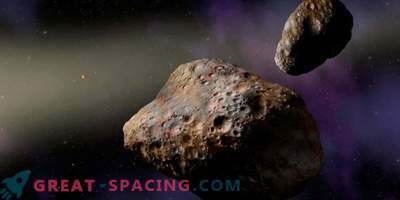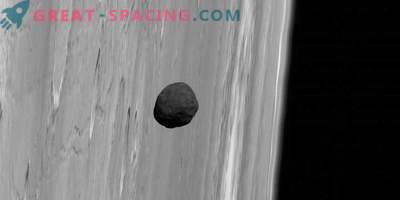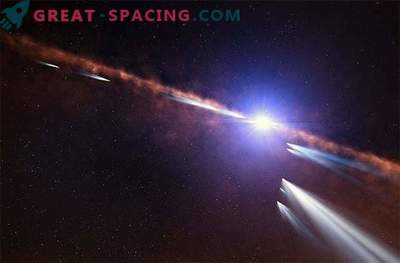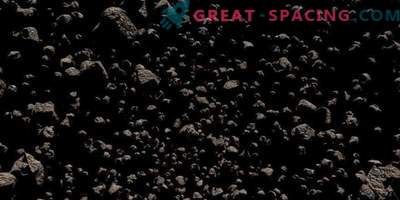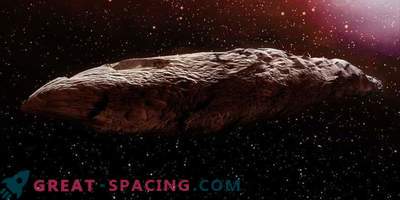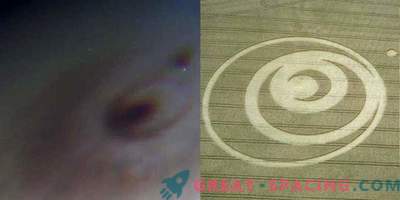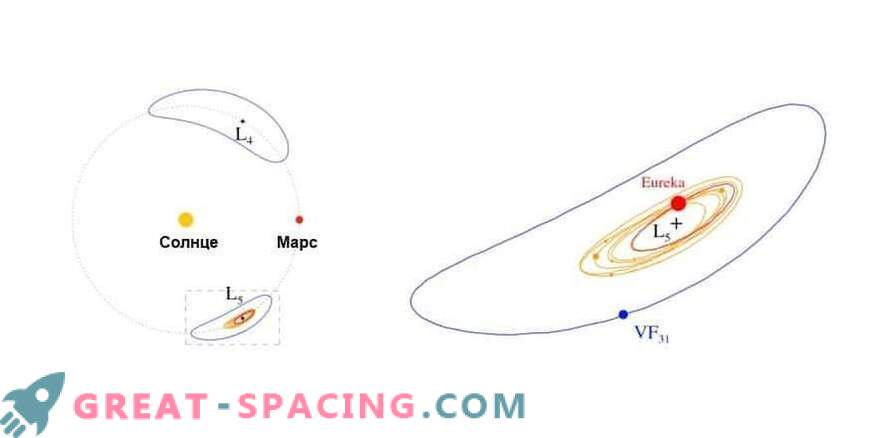
Left: the routes of the famous Martian Trojans around L4 and L5 (intersections) with respect to Mars (red disk) and the Sun (yellow). The dotted circle is the average distance of Mars-Sun. On the right: an increase in the insertion (dashed rectangle) indicating the routes of 8 Trojans L5: 1998 VF31 (blue), Eureka (red) and 6 objects - members of the family (yellow). The filled disks mark the relative sizes of asteroids. The largest is Eureka (2 km wide).
Mars is forced to share its orbit with a group of small asteroids - the Trojans. Using the Very Large Telescope in Chile, the team of astronomers noticed that most of them were formed from one set of materials. Most likely, they represent the remnants of a mini-planet destroyed by an ancient strike.
Trojan asteroids pass along the orbital path at the same distance from the star as Mars (60 degrees ahead of and behind it). Of particular interest to their location was the French mathematician Joseph-Louis Lagrange, who called the famous “Lagrange Point”.
On Jupiter we found about 6,000 similar objects and about a dozen of Pluto. It is believed that they allow you to look at the ancient system, the code objects were located in other places than now.
Mars is the only terrestrial-type planet with Trojan satellites fixed in a permanent orbit. The first Trojan was found 25 years ago in L5 and named Eureka (a reference to Archimedes' statement). Now they number 9, which is 600 times smaller than that of Jupiter. But even this representative demonstrates an interesting structure that you will not find anywhere else in our system.
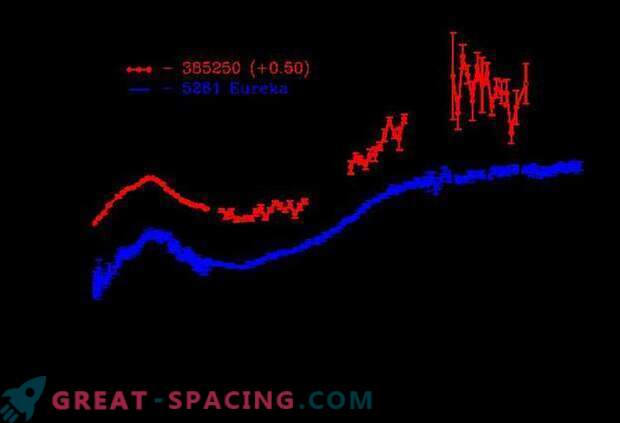
Spectra of the Eureka group asteroids: (385250) 2001 DH47 (red) and (311999) 2007 NS2 (black). Spectrum 5261 Eureka is displayed in blue. All of them are similar, which hints at the same composition, which is also common among asteroids.
First of all, all Trojans, except for one, lag behind the planet at the Lagrange point (Fig. 1, left). The orbits of all but one of the 8 L5 trojans are concentrated around Eureka (Fig. 1, right). While no one knows exactly why they are so uneven, but there are theories. The impact could have broken the asteroid at L5, leaving a group of fragments. Or else the rotational pressure caused Eureka to unwind, creating small debris around its heliocentric orbit. Whichever option is correct, such a cluster clearly hints that these asteroids were part of a single object. In the end, only the acid test can help, which determines the composition. Fortunately, this can be done with a telescope. It is only necessary to measure the color of the sunlight reflected from the surface (to obtain a spectrum).
For this, Apolostolos Christou and Galin Borisov used the spectrograph X-SHOOTER installed on the Very Large Telescope at the beginning of 2016. They wanted to create the spectra of two asteroids from the Eureka group (311999 and 385250). They found that these objects are “dead copies” of Eureka, which confirmed the “relationship”. Spectra show that olivine is present in the composition. Usually this mineral appears in larger objects at high pressure and temperature. Scientists believe that these asteroids are mantles of mini-planets or planetesimals, which, like Earth, managed to form the crust, core and mantle. But because of the blow, they collapsed.
Christow reminded that there are many Trojans between Mars and Jupiter, but none of them is saturated with olivine. All this is connected with the problem of the mantle shortage: if you add on the mass of various materials in the asteroid belt, there is a shortage of the mantle in comparison with the stone crust and the metallic core material.
Although the discovery of this group with the presence of olivine does not solve the problem, but this suggests that the mantle material was located near Mars at the very beginning of the history of our system. That is, he participated in the formation of the Red Giant and, possibly, of our Earth too.



